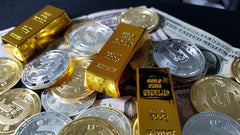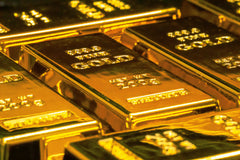What is Platinum?
Platinum is a rare and precious metal that is widely regarded for its versatility and unique properties. Known by the chemical symbol Pt, it holds a special place both in industrial applications and ornamental use.
Unlike many other metals, platinum is actually highly resistant to corrosion, which enhances its desirability in a number of different sectors and industries. Its silvery-white colour, combined with its density and high melting point, makes it suitable for even the most demanding use cases and roles. While not as widely known as gold or silver, platinum’s unique features and scarcity have earned it a valuable spot in the precious metals market, particularly for investors who are looking to diversify their portfolios.
History of Platinum
The history of platinum is a rich and fascinating one. Though its widespread use is relatively recent, platinum was known to ancient civilisations. As early as 1200 BCE, the indigenous people of South America used platinum to create decorative objects, often combining it with gold.
However, platinum’s modern significance grew in the 18th century when European scientists began to study it in earnest. In 1735, Spanish scientist Antonio de Ulloa was credited with the formal discovery of platinum as a distinct metal. Its resistance to tarnish, high durability, and rarity soon attracted attention, especially in jewellery and industrial applications.
Today, platinum continues to play a critical role in various sectors, from automotive manufacturing to medical devices, further driving its demand in the global market.
Physical and Chemical Properties
One of the reasons platinum stands out among metals is due to its remarkable physical and chemical properties. Platinum is a dense metal, with a weight that exceeds gold and silver. It’s also known for its high melting point of 1,768 degrees Celsius, making it suitable for high-temperature applications.
Chemically, platinum is classified as a noble metal, meaning it’s extremely resistant to oxidation and corrosion. This property gives it a long-lasting appeal, particularly in jewellery. Unlike metals that rust or tarnish, platinum retains its lustre even after many years of use.
Additionally, platinum is highly malleable, allowing it to be shaped without breaking, a key feature in the creation of intricate jewellery designs.
Uses of Platinum
Platinum’s uses are as diverse as its properties. One of its most important applications is in the automotive industry as a critical component in catalytic converters. These devices reduce harmful emissions from vehicles, making them essential for meeting environmental standards.
Beyond automotive use, platinum is widely used in electronics and medical industries. In electronics, it’s often found in hard disk drives and LCD screens due to its excellent conductivity.
In medicine, platinum compounds are used in chemotherapy drugs, particularly in treating cancer, while its hypoallergenic properties make it ideal for surgical instruments and implants.
Platinum is also highly prized in the jewellery industry. Its rarity and lustrous appearance make it a popular choice for engagement rings, watches, and other high-end accessories.
Platinum Mining and Production
Platinum is found primarily in South Africa, which accounts for nearly 70% of global production. Other significant producers include Russia, Zimbabwe, and Canada. Extracting platinum from the earth is a labour-intensive and complex process, as the metal is often found alongside other minerals like nickel and copper. Once mined, platinum undergoes refining to remove impurities and produce the metal in its pure form.
Platinum is rarer than gold, with annual production levels significantly lower. This scarcity contributes to the high platinum price, making it a valuable commodity for both industrial use and investment. Fluctuations in supply, geopolitical issues, and changes in industrial demand can all have a significant impact on the global price of platinum.
Platinum as an Investment
For investors, platinum presents a unique opportunity to diversify a portfolio. While gold has traditionally been the metal of choice for wealth preservation, many investors are now considering platinum for its potential growth and scarcity. The platinum price tends to fluctuate more than gold, primarily due to its heavy reliance on industrial demand. For instance, when the automotive industry experiences growth, the demand for platinum rises, driving up prices.
Platinum vs gold is often a topic of interest for investors. While gold is viewed primarily as a safe-haven asset, platinum’s value is closely tied to industrial growth. This means that in periods of economic expansion, platinum can actually outperform gold, making it an attractive option for those looking to capitalise on market trends. However, because of its volatility, investing in platinum tends to carry more risk than you’d find with gold.
Conclusion
In conclusion, platinum is a highly valuable metal with diverse applications that range from industry to investment. Its rarity and unique properties ensure that it remains a significant asset in the global market. Whether you’re looking to invest in platinum for its industrial relevance or as a precious commodity, understanding its history, uses, and market dynamics can help you make informed decisions.
Looking for more investment information? Check out our blog for even more articles on gold, silver, platinum, and other precious metals.


